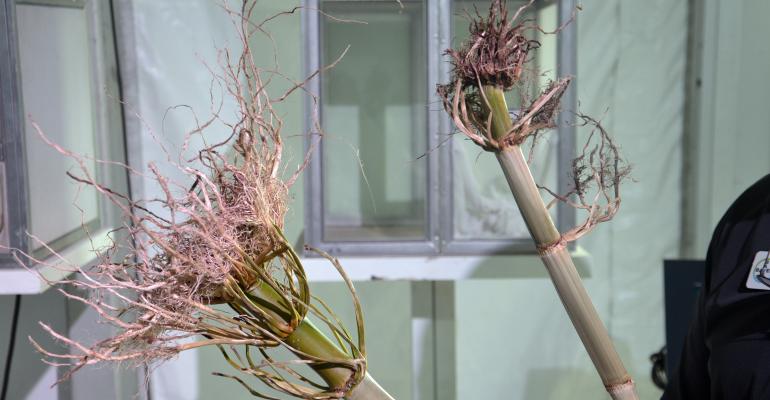Stay ahead of corn rootworm in Indiana

Corn Pest Beat: Scouting for rootworm beetles is probably more important now than ever.
Nov 04, 2021
We’re hearing about corn rootworm problems in Western states. Are those problems coming here? How should we approach corn rootworm control for 2022?
The Indiana certified crop adviser panel answering this question includes Steve Gauck, a regional agronomy manager for Beck’s, Greensburg; Jeff Nagel, agronomist with Ceres Solutions, Lafayette; and Dan Ritter, agronomist with Dairyland Seed, Rensselaer.
Gauck: Pay attention to insect trapping reports from agronomists. Many have monitored insect flights and will be able to determine the risk of high pressure in your area for next year. If you are in an area with a history of corn rootworm pressure and you plan to go corn after corn, look at what trait package protection you have. Using corn hybrids with multiple modes of action will help offer protection.
Next, look at your ability to apply an insecticide with your planter. If you have that option and rootworm flights are high in your area, look to applying insecticide in combination with your traited corn.
Nagel: Fortunately, we’re not seeing the same issues as Western states, and we hope it stays that way! Corn rootworm pressure has been increasing in several Western states, and resistance has developed in some Bt trait platforms.
In Indiana, our overall corn rootworm pressure has not experienced a wide-spread resurgence.
Ceres Solutions participated in a new Corn Rootworm Adult Monitoring Network in 2021 used across the Midwest. Yellow sticky traps were placed in soybean fields that will be rotated to corn in 2022 and were monitored every four weeks beginning in mid-July. Overall, numbers were low, except for one site in Jasper County. Check out the results of all the sites in the network.
While overall CRW numbers remain on the lower side in Indiana, there still can be areas or fields that experience higher populations. It is important to monitor CRW pressure going forward. Several farm operations have moved away from below-ground trait protection and are not using a soil-applied insecticide or high rate of an insecticide seed treatment. Fields in corn-corn rotation should have some type of CRW protection, particularly if they were not monitored for CRW pressure during the ’21 growing season.
Ritter: We are coming off two pretty good hatch years for corn rootworm in the Western states. Drier soil conditions during larvae hatch increase their survival rate. Those problem areas tend to be on long-term continuous cornfields and where no insecticide was used in conjunction with CRW-traited corn. What we have in our favor in Indiana is that although beetle numbers may be increasing, they are not close to the numbers we see to the west.
Best management practices for use of CRW-traited corn in areas of long-term continuous corn include using a soil-applied insecticide. With lower beetle numbers, we don’t have as many hatching larvae eating root tissue. Remember, those larvae must eat some root tissue to ingest the lethal protein. Typically, we are in corn-soybean rotation, and that helps as well.
In Indiana, I would strongly consider scouting fields and revisit using sticky traps to monitor beetle populations, if you aren’t already doing so. Alternate the use of CRW-traited products and/or use an insecticide. Stay in rotations as much as possible, and simply employ similar concepts to managing and maintaining long-term herbicide viability.

